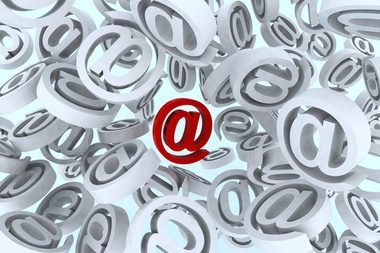This means that not only can you not receive any new mail messages, you can’t send any emails either. This usually happens right at the climax of a very important project. The question is: What can we do about it? You could always ask your email administrator to increase your limits, but that could take some time depending upon how busy they are with other help desk tickets. Below I’ve offered ways to help yourself. Plus, if you’ve already done these steps below, then when you do request the help desk ticket for increasing your limits, you will stand a much better chance of getting them increased.
Three Solutions
The first thing that you can do is empty your Deleted Items folder. The following steps are if you are using Outlook, but the concepts work in almost any mail program. Like your trash can at home, if you don’t empty the Deleted Items once in a while, you won’t ever get the space back. Simply right-click on the Deleted Items folder and choose Delete. The next one that’s often overlooked is your Sent Items folder. Outlook by default, saves every mail message to your Sent Items folder. Most other mail programs have the same capabilities. What this means is that every single “Hey…what are you doing for lunch?” email is in there. All five years worth of them. You don’t need to hang onto those messages. Go ahead and delete them. This step may take a bit longer than emptying the Deleted Items folder, but it will get the job done as well. You may want to sift through the messages, since there will be some messages that you have sent that you want to retain. The third option is to use the AutoArchive function of Outlook. This one could be an issue for you, since the criteria for most archiving is by date. There are some messages (an annual or biannual contract negotiation with a vendor, for example) that you need to keep. Instead of auto-archiving those, move the messages to another folder manually. Outlook is usually configured to store messages on the Exchange server, which is good because you can sign into any PC in your organization and still retrieve your messages. Likewise, you can sign into webmail while you are traveling and still have access to those same messages. Unfortunately, this is where those mailbox limits come into play. For less critical mail, create an archive for yourself , since we’ve determined that AutoArchiving may not be the answer.
Your Own Personal Email Archive
The way to do this is to have Outlook open, then go to File > Account Settings. Click on the Data Files tab and click on Add. This will let you create a new .PST file. You can name it anything your want. (I would suggest something along the lines of “2011 Archives” vs. “Personal Folders”, which is the default name. And no, I don’t know how they got PST out of Personal Folders. It’s a mystery to me too…) When you go to create the new PST file, you may want to create it in your shared files drive letter (commonly called H: for home, P: for Personal or U: for Users — your mileage may vary depending upon your network administrator.) This will create a new folder icon underneath your normal mailbox icons on the left. Expand this folder and start dragging emails over to the new folder. This folder used to have a limit of 2 GB in size, although you could always create more PST files. In Outlook 2010, they changed its formatting, increasing the limit to 50 GB — more than enough space. (If you need more than 50 GB of email, you have bigger issues than “mailbox full” messages.) There are some caveats to this method of archiving. First, this PST file won’t be available to you from machine to machine, unless you saved it to your U: drive. Secondly, if the machine that you put it on gets corrupted or has a hard disk failure, say goodbye to your e-mail (unless it’s backed up…you do have a backup, right? ). Third, your email administrator or your network security may not favor you doing this. If there is a virus in the email system, they can clean the mail servers. If if makes it into your PST file, it’s a whole lot harder to eradicate it. Of course, you should have anti-virus scanning your email as it comes in, but it still is a concern. If this still doesn’t do the trick, then you simply need a larger quota. Doing the steps above will help support your request for more space. (Photo credit: White Email Symobls with One Red One via Shutterstock)
